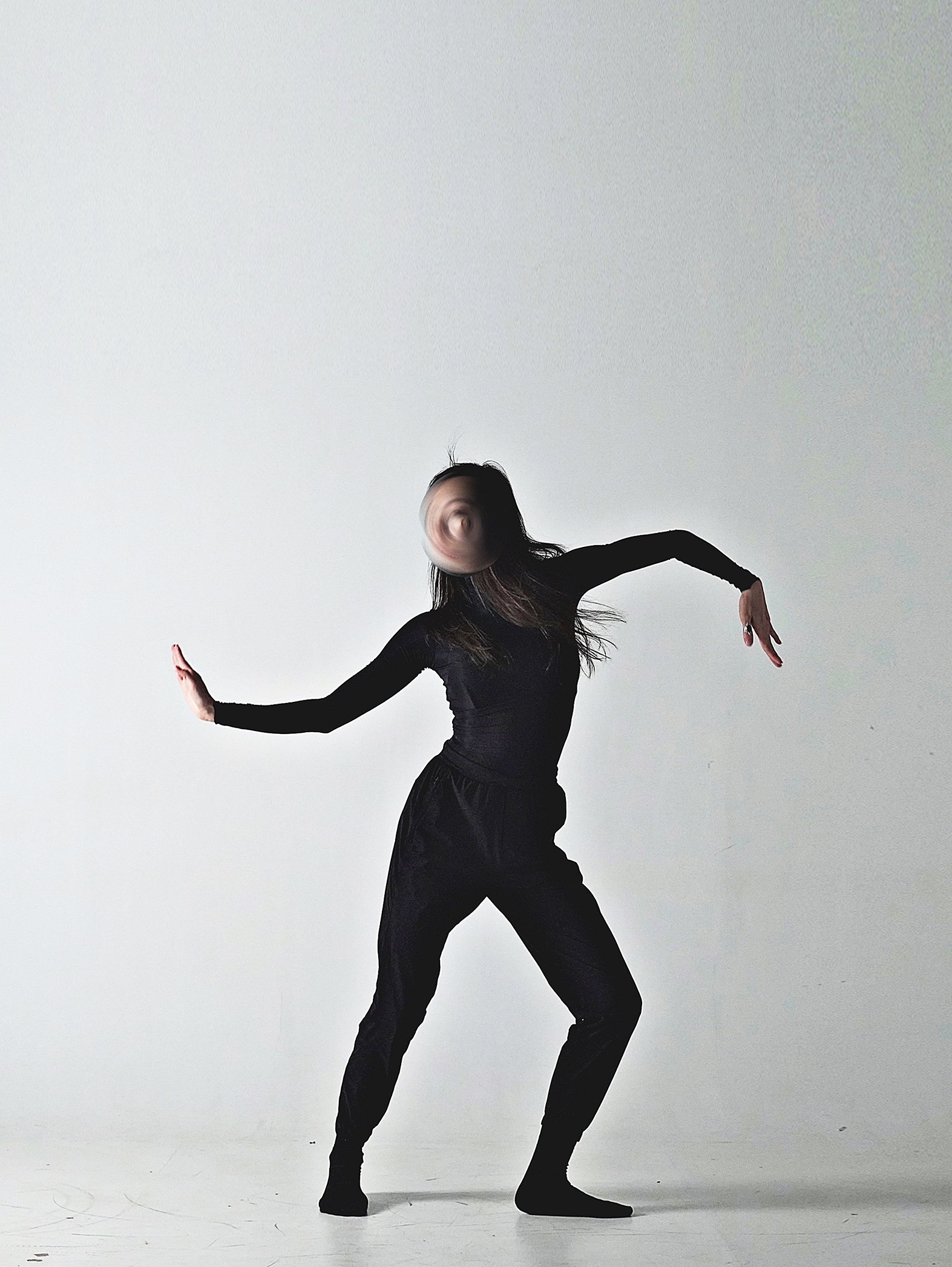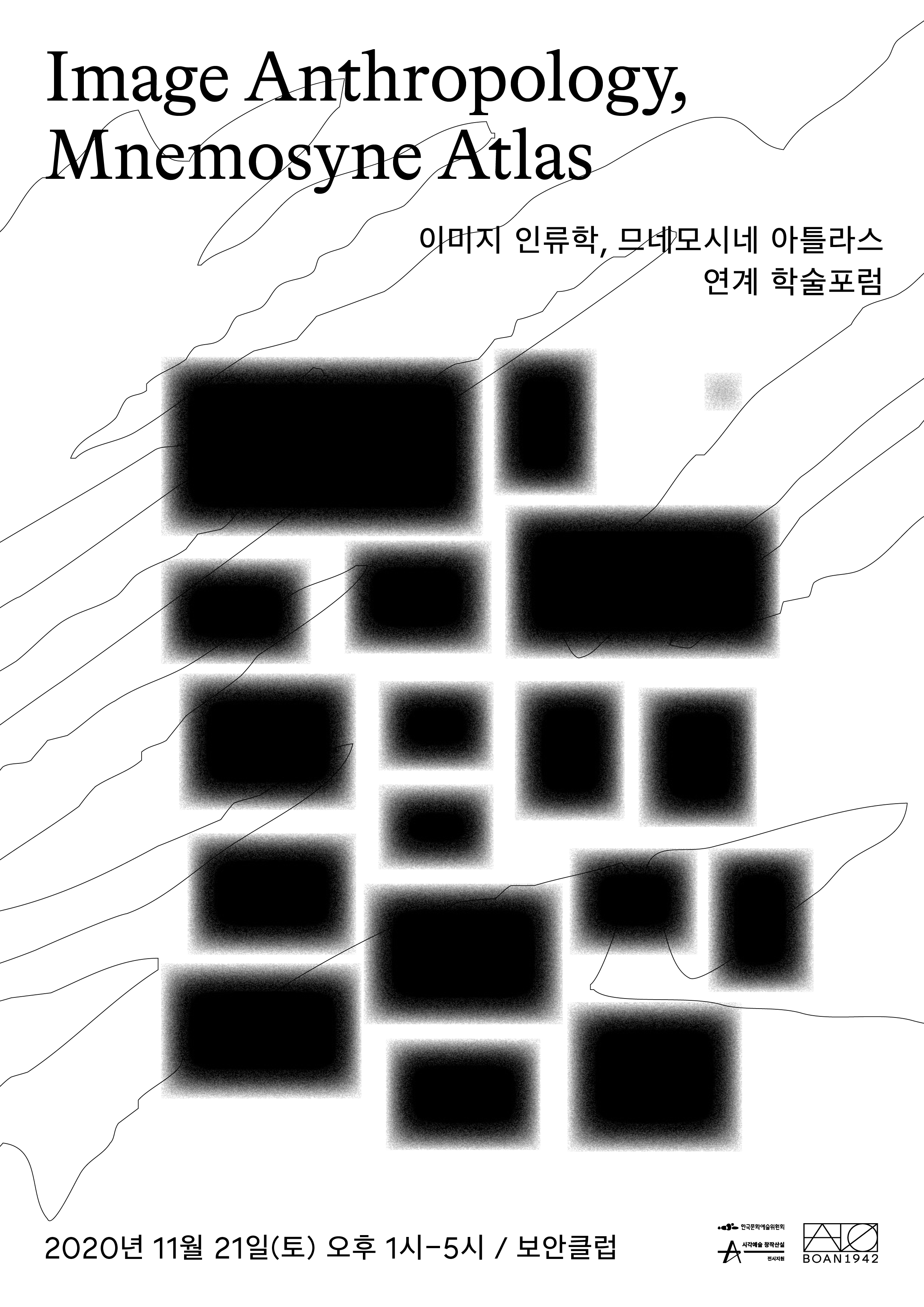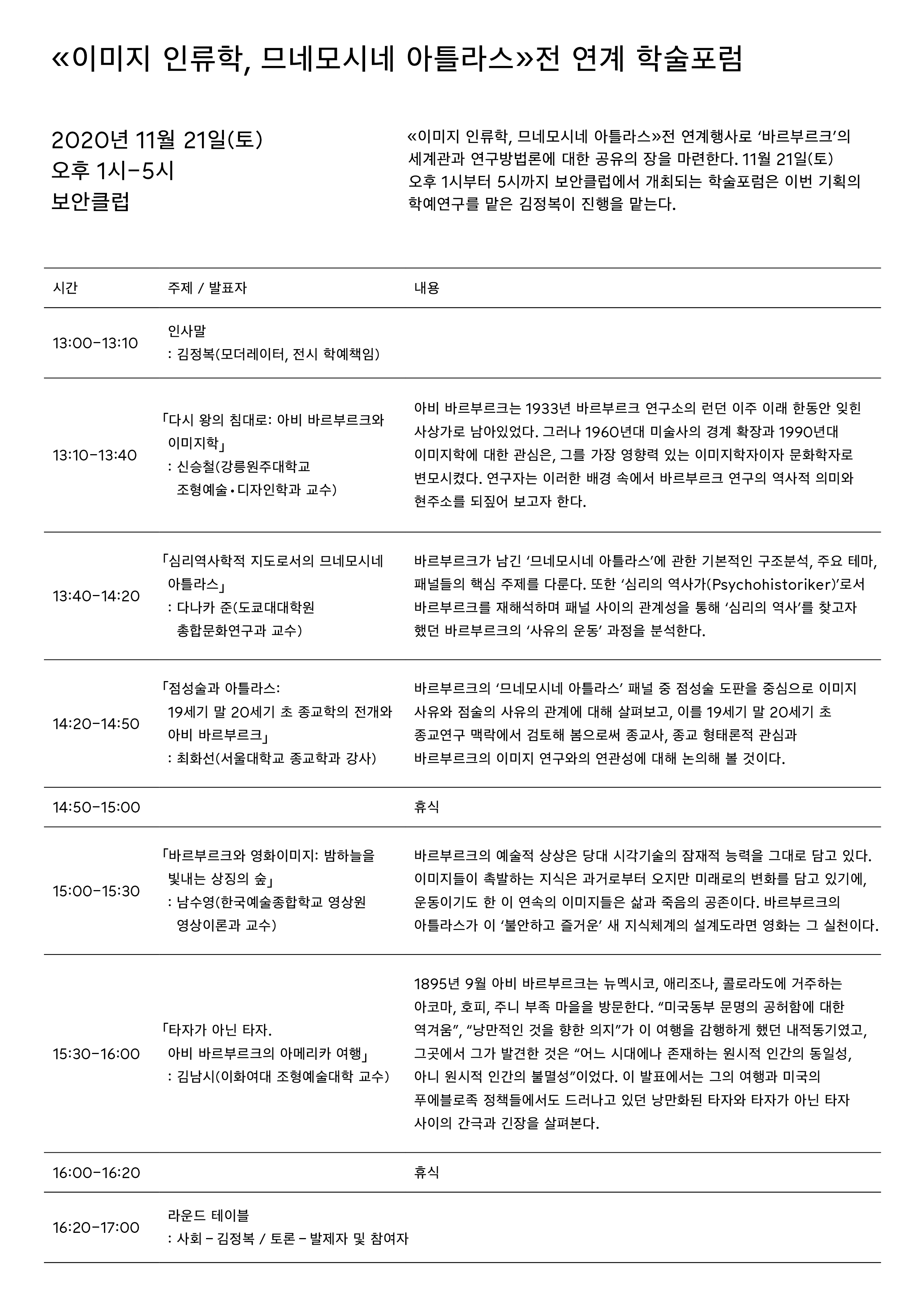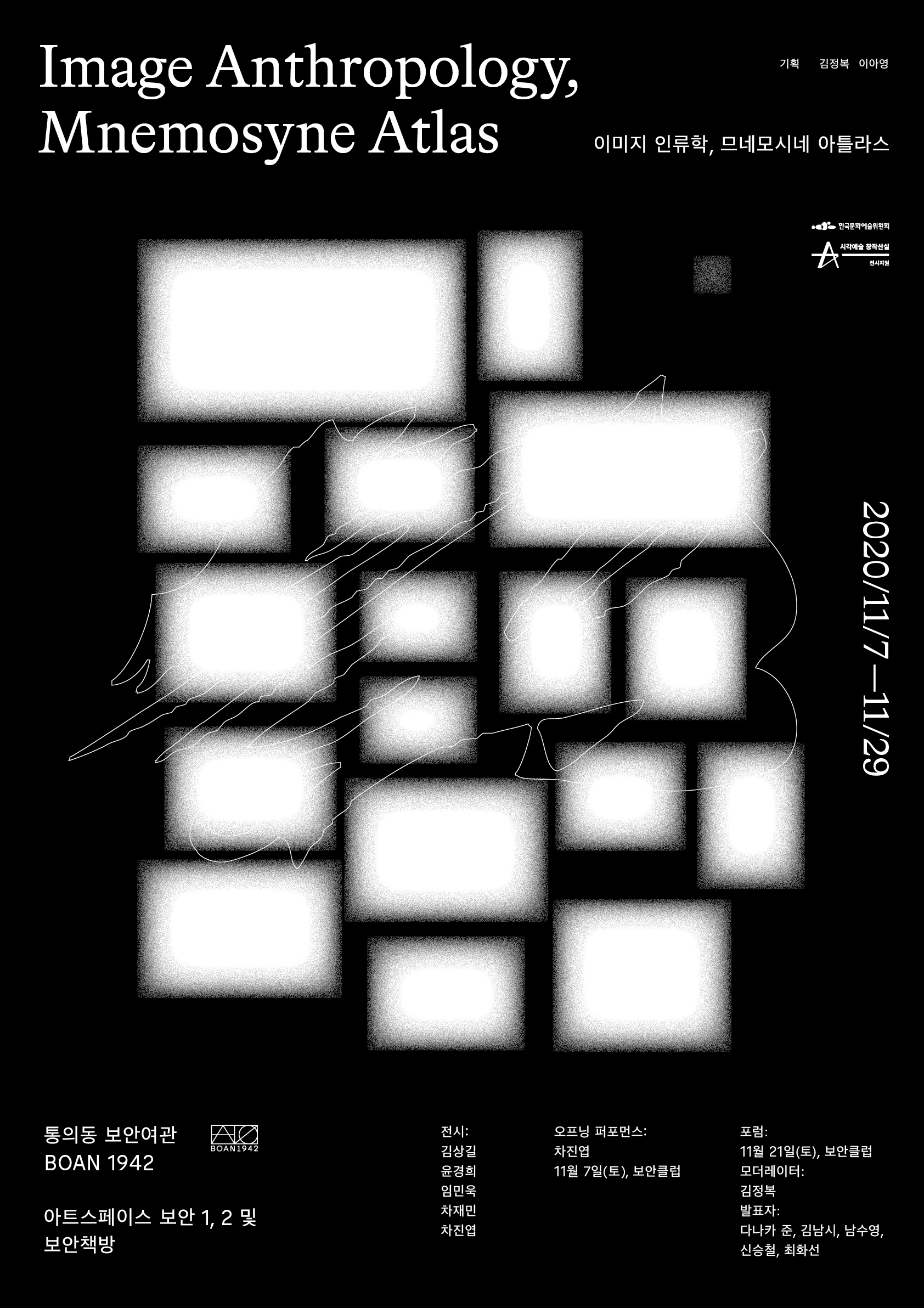- 일시 : 2020. 11. 7 ~ 11. 29
- 기획 : 김정복, 이아영
- 참여 작가 : 김상길, 윤경희, 임민욱, 차재민, 차진엽
- 장소 : 아트 스페이스 보안 1,2 및 보안책방
- 운영시간 : 12:00 ~ 18:00
- 오프닝 퍼포먼스 (차진엽) : 11. 7 (토) , 오후 5시 보안클럽 (신관 B2)
*오프닝 퍼포먼스 참석 신청 마감
- 전시 연계 포럼 : 11. 21(토), 오후 1시~5시 보안클럽 (신관B2)
*포럼 신청 마감 / 당일 유튜브 스트리밍 링크 https://www.youtube.com/channel/UCsf6uQXHfZh9uF8BBQZKVeA
– 모더레이터 : 김정복 / 발표자 : 다나카 준, 김남시, 남수영, 신승철, 최화선
- 매주 월요일 휴관
- 입장료 무료
- 후원 : 한국문화예술위원회



<이미지 인류학, 므네모시네 아틀라스>
디지털 테크놀로지를 기반으로 다매체 시대를 살고 있는 2020년, 인문학적 상상력, 장르 간 융복합을 통한 창작활동과 학제연구의 중요성이 쟁점화되고 있다.
한국에서는 2000년대 이후 인문학 데이터베이스화가 급속하게 진행되어 왔고, 문화예술계에서 아카이브 경향이 하나의 트렌드로 자리잡으며, 시각문화, 영상문화, 공연예술 분야 등 국내 주요 기관에서 온라인/오프라인 아카이브 구축사업, 아카이빙 프로젝트가 활성화되고 있다.
독일의 미술사학자/이미지학자(Bildwissenschaftler) 아비바르부르크(Aby Warburg, 1866–1929)의 ‘므네모시네 아틀라스’는 이미지를 매개로 유럽문화사를 문화적 기억 연구 관점에서 집대성한 프로젝트로서, 동시대의 참조점이 될 만한 이미지 인류학의 보고(寶庫)다. 이미지를 매개로 하는 학제연구, 창제작 현장은 예술 분야의 장르 융복합적 실험을 넘어서 인문지(人文知)와 자연과학을 교차하는 이미지학(Bildwissenschaft)으로 확장되고 있다. 이러한 동시대적 흐름에 부응하여 한국에서는 처음으로 런던바르부르크연구소에서 이미지 아틀라스 패널 63매를 입수하여 소개하는 패널 전시와 포럼, 한국 작가들의 전시로 이루어진 아카이브 전시를 개최한다.
아비 바르부르크의 ‘므네모시네 아틀라스’ 프로젝트는 이미지의 발생, 이동과 변모 과정을 문화사적 관점에서 맥락화하는 신체적 기억에 관한 탐구방법론이다. 바르부르크는 인간의 감정에 따라 발현되는 표정과 몸짓언어의 이미지를 수집하였는데 이는 이미지 인류학의 선구적 표본이며 인간의 근원적 감정에 대한 분석틀을 제공한다. 융복합적 상상력의 원천이 되는 학제연구, 다문화연구의 혁신적 방법으로서 바르부르크의 이미지 연구를 소개하고, 국내 연구자들의 논의, 창작자들의 작품을 통해 멀티 네트워크 시대 이미지 인류학의 가능성을 확장한다.
Image Anthropology, Mnemosyne Atlas
In 2020, a digital technology-based multimedia era, there is an increasing awareness of the importance of creative activities and interdisciplinary research through cross-genre convergence and humanistic imagination.
Since the 2000s, the construction of humanities databases has been developing rapidly in South Korea, archives have established themselves as an important trend in the cultural arts world, and online/offline archive construction and archiving projects are flourishing within major national institutions in the fields of visual culture, video culture and performance art.
As a project compiling European cultural history through the medium of images from a cultural memory research perspective, German art historian/Bildwissenschaftler Aby Warburg(1866-1929)’s ‘Mnemosyne Atlas’ is a repository of image anthropology and a contemporary reference point. The act of creation and interdisciplinary research through the medium of images goes beyond the genre-convergent experiments of the arts, expanding as Bildwissenschaft(Image-science), the intersection of natural science and the humanities. In answer to this contemporaneous trend, for the first time in South Korea, we are opening an archive exhibition consisting of exhibitions by Korean artists as well as panel exhibitions and a forum introducing the 63 Image Atlas panels that we have acquired from the Warburg Institute.
Aby Warburg’s ‘Mnemosyne Atlas’ project is a research methodology concerning physical memory that contextualizes the process of the emergence, movement and transformation of images from a cultural historical perspective. Warburg collected images of facial expressions and body language associated with human emotions, which are pioneering examples of image anthropology and provide an analytical framework for underlying human emotions. As an innovative method of multi-cultural and interdisciplinary research and source of convergent imagination, this project introduces Warburg’s image research and expands the possibilities of image anthropology in the multinetwork era through the works of Korean artists and discussions by Korean scholars.

